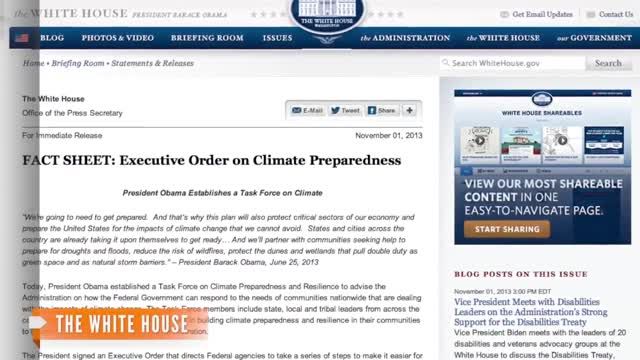The controversy of who is responsible for climate change and thus who must pay for it goes on in light of the latest natural disaster that is linked to climate change. Unless we learn to look at this issue, among others, through communal eyes instead of self interest then no meaningful solution is possible. Each actor thinks that he/she is doing what is good for themselves when in effect they are contributing to a strengthening of the calamitous outcome.
$$$$$$$$$$$$$$$$$$$$$$$$$$$$$$$$$$$$$$$$$$$$$$$$$$$$$$$$$$$$$$$$$$$$$$$$$$$$$$$$$$$$$$
Growing Clamor About Inequities of Climate Crisis
By STEVEN LEE MYERS and NICHOLAS KULISH
WARSAW — Following a devastating typhoon that killed thousands in the
Philippines, a routine international climate change conference here
turned into an emotional forum, with developing countries demanding
compensation from the worst polluting countries for damage they say they
are already suffering.
Calling the climate crisis “madness,” the Philippines representative vowed to fast
for the duration of the talks. Malia Talakai, a negotiator for the
Alliance of Small Island States, a group that includes her tiny South
Pacific homeland, Nauru, said that without urgent action to stem rising
sea levels, “some of our members won’t be around.”
From the time a scientific consensus emerged that human activity was
changing the climate, it has been understood that the nations that
contributed least to the problem would be hurt the most. Now, even as
the possible consequences of climate change have surged — from the
typhoons that have raked the Philippines and India this year to the
droughts in Africa, to rising sea levels that threaten to submerge
entire island nations — no consensus has emerged over how to rectify
what many call “climate injustice.”
Growing demands to address the issue have become an emotionally charged flash point at negotiations here at the 19th conference of the United Nations Framework Convention on Climate Change, which continues this week.
“We are in a piece of land which is smaller than Denmark, with a
population of 160 million, trying to cope with this extreme weather,
trying to cope with the effect of emissions for which we are not
responsible,” Farah Kabir, the director in Bangladesh for the
anti-poverty organization ActionAid International, said at a news
briefing here.
With expectations low for progress here on a treaty to replace the 1997
Kyoto Protocol, widely seen as having failed to make a dent in worldwide
carbon emissions, some nations were losing patience with decades of
endless climate talks, particularly those who see rising oceans as a
threat to their existence.
“We are at these climate conferences essentially moving chess figures
across the board without ever being able to bring these negotiations to a
conclusion,” Achim Steiner, executive director of the United Nations
Environment Program, said in a telephone interview.
Although the divide between rich and poor nations has bedeviled
international climate talks for two decades, the debate over how to
address the disproportionate effects has steadily gained momentum. Poor
nations here are pressing for a new effort that goes beyond reducing
emissions and adapting to a changing climate.
While they have no legal means to seek compensation, they have demanded
concrete efforts to address the “loss and damage” that the most
vulnerable nations will almost certainly face — the result of fragile
environments and structures, and limited resources to respond.
The sheer magnitude and complexity of the issue make such compensation
unlikely. The notion of seeking justice for a global catastrophe that
affects almost every country — with enormous implications for economic
development — is not only immensely complicated but also politically
daunting.
It assumes the culpability of the world’s most developed nations,
including the United States and those in Europe, and implies a moral
responsibility to bear the costs, even as those same nations seek to
draft a new treaty over the next two years that would for the first time
compel reductions by rapidly emerging nations like China and India. As a
group, developing countries will within a decade have accounted for
more than half of all historical emissions, making them responsible for a
large share of the continuing impact humanity will make, if not the
impact already made.
Assigning liability for specific events — like Typhoon Haiyan, which
struck the Philippines with winds of at least 140 miles an hour, making
it one of the strongest storms on record — is nearly impossible. It can
take scientists years just to determine whether global warming
contributed to the severity of a particular weather event, if it can be
determined at all.
Many negotiators here have pressed to create a new mechanism that
effectively accepts the idea that the results of climate change are
irreversible and that the countries that are hit hardest first must be
compensated.
“We’ve reached a stage where we cannot adapt anymore,” said Ronald
Jumeau, the United Nations representative for the Seychelles, who is his
country’s chief negotiator here. He noted the devastating effects not
only of extreme storm events, but also of creeping desertification,
salinization and erosion that could result in financial losses and even
territorial issues that the modern world has never had to face.
“This is new,” he said. “This is like, ‘The Martians are landing!’ What do you do?”
John Kioli, the chairman of the Kenya Climate Change Working Group, a
consortium of nongovernmental organizations, called climate change his
country’s “biggest enemy.” Kenya, which straddles the Equator, faces
some of the biggest challenges from rising temperatures. Arable land is
disappearing and diseases like malaria are appearing in highland areas
where they had never been seen before.
Developed countries, Mr. Kioli said, have a moral obligation to shoulder
the cost, considering the amount of pollution they have emitted since
the Industrial Revolution. “If developed countries are reasonable
enough, they are able to understand that they have some responsibility,”
he said.
How to compensate those nations hardest hit by climate changes remains
divisive, even among advocates for such action. Some have argued that
wealthy countries need to create a huge pool of money to help poorer
countries recover from seemingly inevitable losses of the tangible and
intangible, like destroyed traditions.
Mr. Jumeau noted that Congress allocated $60 billion just to rebuild
from one storm, Hurricane Sandy, compared with the $100 billion a year
that advocates hope to see pledged to a Green Climate Fund by all
nations. The fund, intended to help poorer countries reduce emissions
and prepare for climate changes, has remained little more than an
organizing principle since its creation in 2010, its fund-raising goals
unmet.
Others have suggested a sort of insurance program.
The United States and other rich countries have made their opposition to
large-scale compensation clear. Todd D. Stern, the State Department’s
envoy on climate issues, bluntly told
a gathering at Chatham House in London last month that large-scale
resources from the world’s richest nations would not be forthcoming.
“The fiscal reality of the United States and other developed countries
is not going to allow it,” he said. “This is not just a matter of the
recent financial crisis. It is structural, based on the huge obligations
we face from aging populations and other pressing needs for
infrastructure, education, health care and the like. We must and will
strive to keep increasing our climate finance, but it is important that
all of us see the world as it is.”
Appeals to rectify the injustice of climate change, he added, will
backfire. “Lectures about compensation, reparations and the like will
produce nothing but antipathy among developed country policy makers and
their publics,” he said.
Juan Pablo Hoffmaister Patiño, a Bolivian who represents the alliance of
developing nations known as the Group of 77 and China, said the issue
was not so much about assigning culpability for the looming climate
disaster as doing something to help those nations hardest hit.
“Trying to assign the blame is something that even scientifically could
take us a very long time, and the challenges and problems are actually
happening now,” he said in an interview here. “And we need to begin
addressing them now rather than identifying who is guilty and to what
degree. We can’t make this issue hostage to finding the responsible ones
or not.”
Meanwhile, global emissions continue to rise. A report this month
by the United Nations Environment Program warned that immediate action
must be taken to reduce emissions enough to limit the rise in average
global temperatures to 2 degrees Celsius, or 3.6 degrees Fahrenheit,
above preindustrial levels. That is the maximum warming that many
scientists believe can occur without causing potentially catastrophic
climate change.
The current global turbulence, consistent with what scientists expect to
happen as the climate changes, is already taking a toll.
As the hundreds of diplomats and advocates assembled for talks here,
Justus Lavi was waiting for rain in Kenya. The wheat, beans and potatoes
he planted on his farm in Makueni County sprouted, but the rainy season
brought only two days of showers, threatening to ruin his yield.
In northern Somalia, Nimcaan Farah Abdi’s 10 acres of corn, tomatoes and
other vegetables were ruined as violent storms swept the Horn of
Africa. A typhoon last weekend in nearby Puntland killed more than 100
people, a disaster overshadowed by the far more destructive one in the
Philippines.
“My farm has been washed away,” Mr. Abdi said. It was the second year in
a row of unusually heavy storms to have destroyed his livelihood,
leaving him uncertain about how he will provide for his six children.
“God knows,” he added, “but I don’t have anything to give now.”









